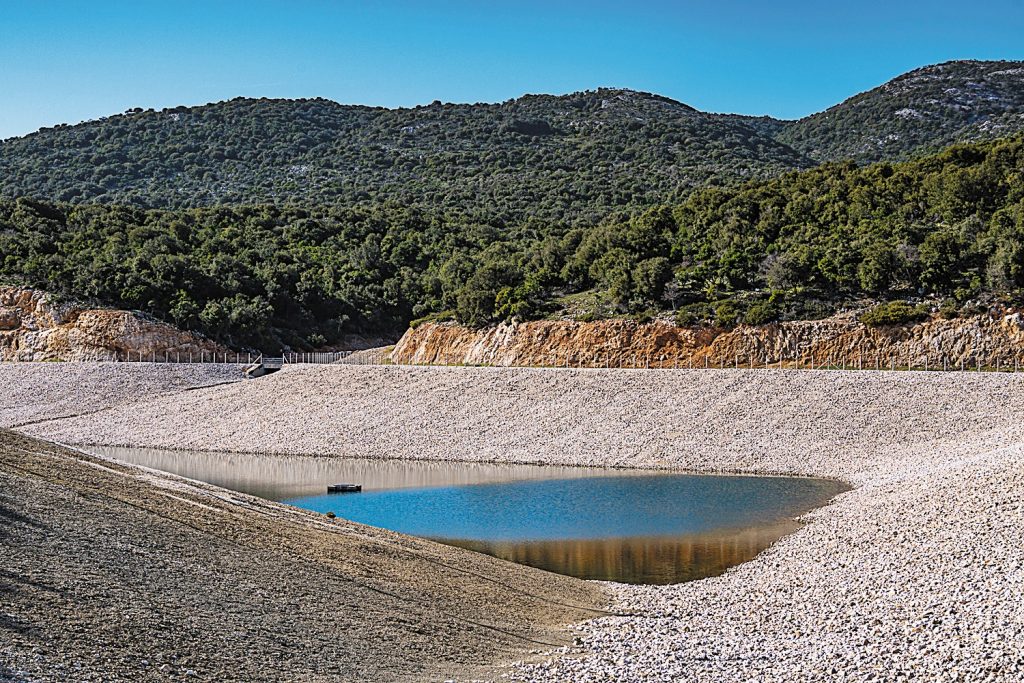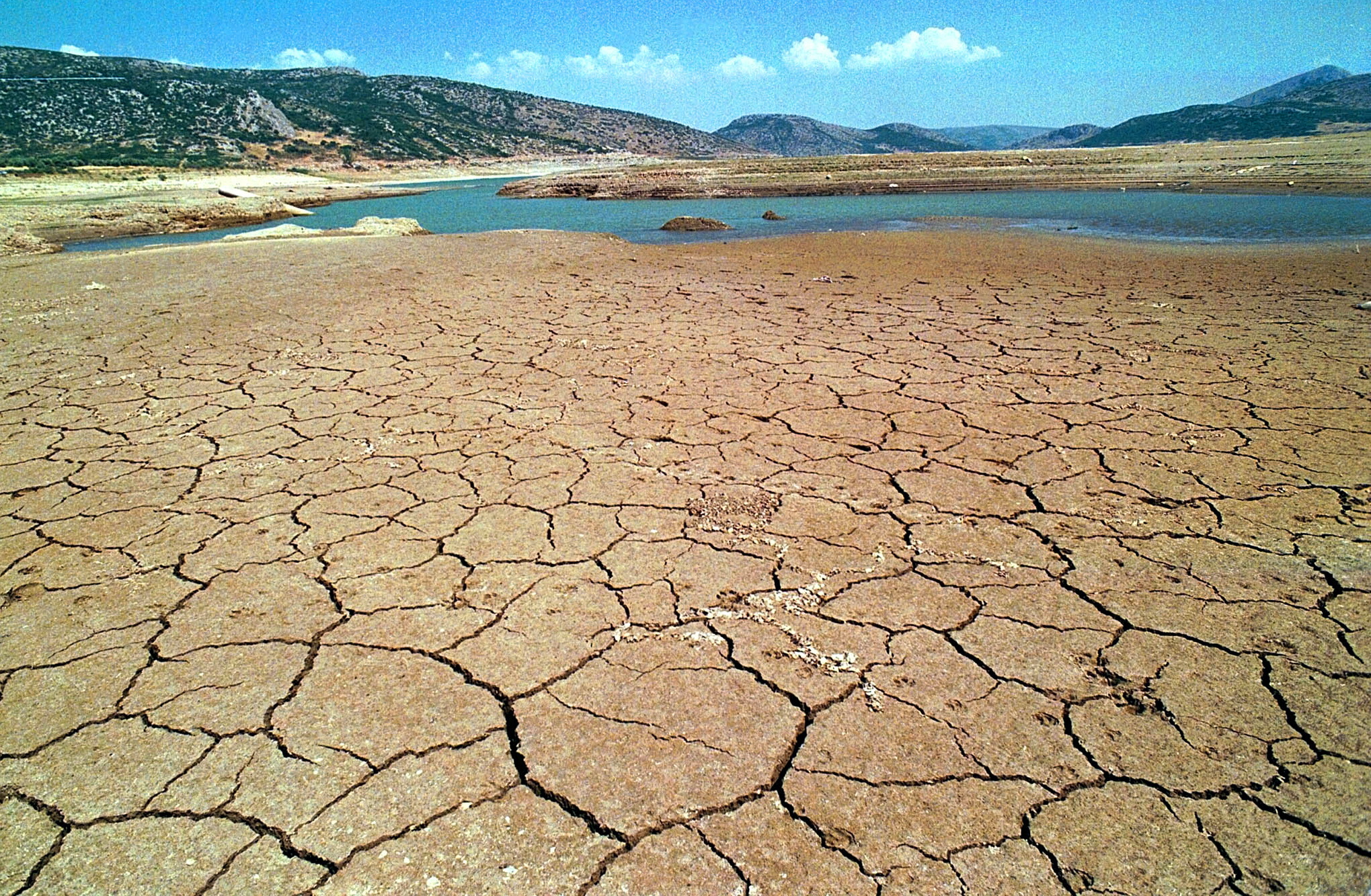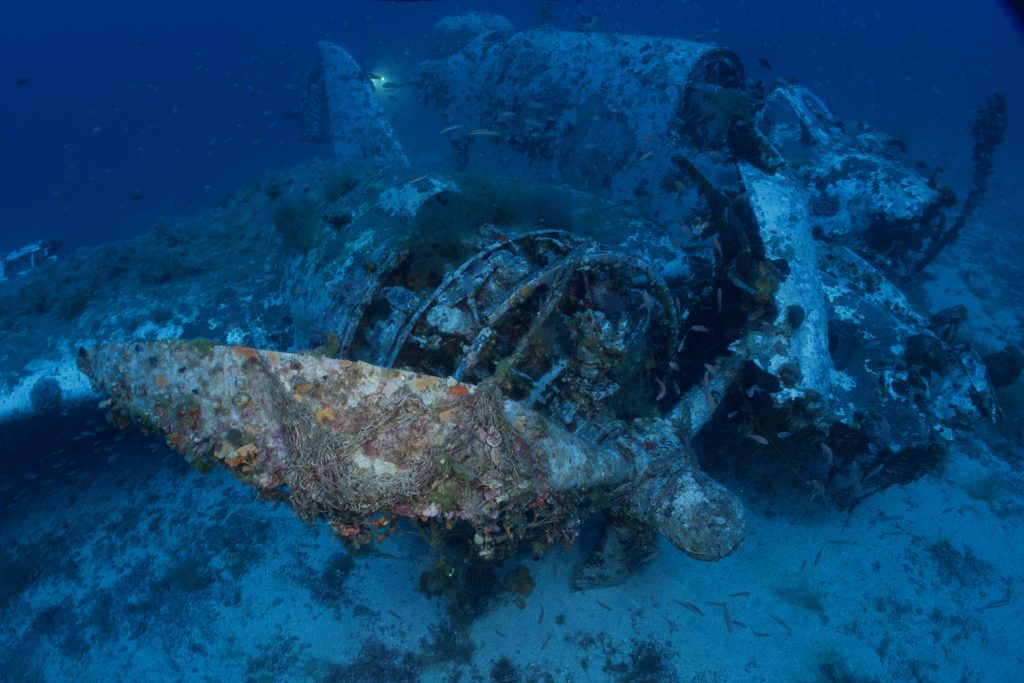Capri became a nightmare for tourists and locals alike this past week, not to mention a public relations disaster for Italy, as the island made global headlines for banning tourists due to a water crisis.
The island’s mayor announced the drastic measure after a technical issue halted the flow of water from the mainland, forcing authorities to ration water to just 25 liters per household from a supply tanker.
The issue was quickly resolved and the flow of tourists to Capri has resumed, but the incident has once again highlighted the volatile relationship between climate change, tourism, insufficient infrastructure, and excessive consumption.
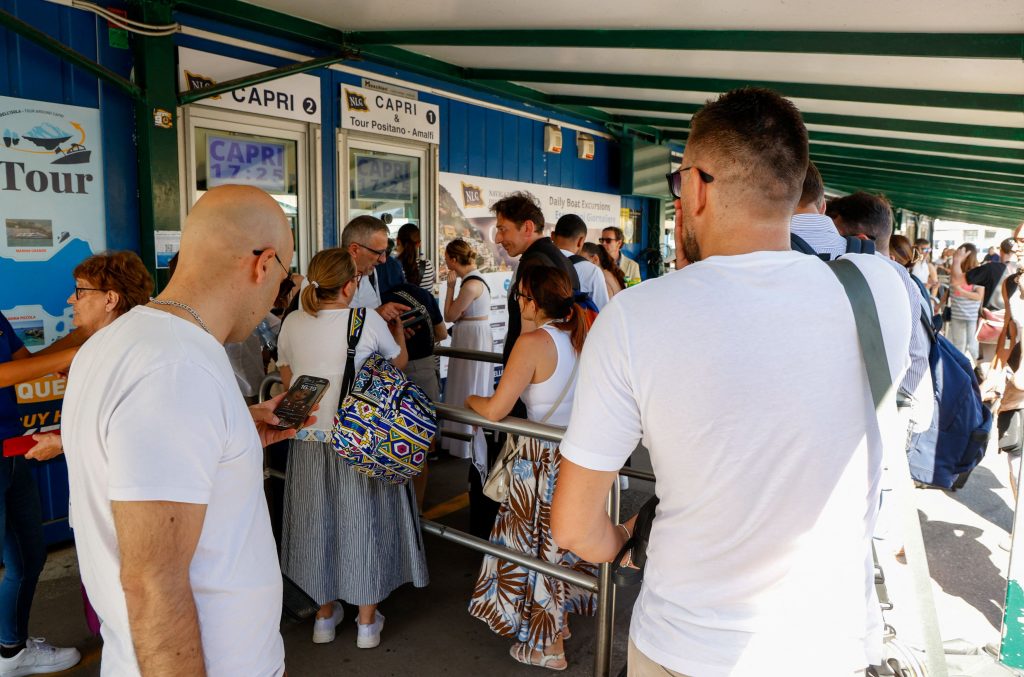
Tourists queue to buy ferry tickets to the Italian island of Capri as local administration works to secure water supplies, in Naples, Italy, June 22, 2024. REUTERS/Ciro De Luca
Tipping the Scales: Climate Change
Water shortages are nothing new for Greece, but experts are concerned that the long-term projections surrounding the impacts of climate change coupled with Greece’s water consumption patterns, antiquated infrastructure, insufficient water management and lack of proper enforcement of regulations will create the perfect storm, leading to a severe and intractable water crisis.
On the climate change front, the European Drought Observatory recently issued warnings of drought and alert drought conditions for most of country. Meanwhile, scientists estimate that Greece will see a 10-30% reduction in rainfall by 2050, with 30% of the country possibly facing desertification within decades as a result.
These problems could be compounded by saltwater contaminating water supplies as a result of rising sea levels.
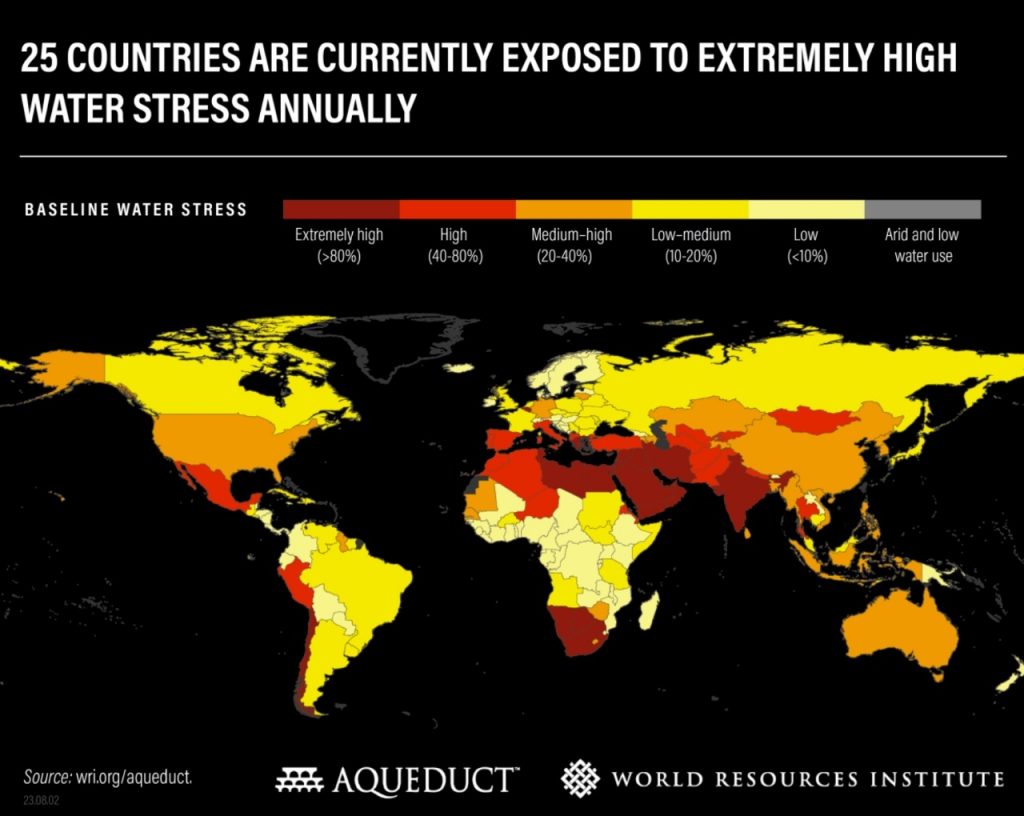
Consumption & Tourism
Greek households have the 4th highest consumption of water per capita in Europe, at 177 liters per day, yet pay one of the lowest costs per cubic meter of water in Europe, even after adjusting for cost of living. What’s more, these consumption rates do not take the impact of Greece’s ever-growing tourism industry into account.
Even without the potential impact of climate change, Greece faces a high risk for a water crisis because it consumes over 80% of the water it produces. This places it in the top 25 countries world-wide for water stress, according to the Aqueduct Water Risk Atlas. The threat of water scarcity for the country was confirmed by Greece’s own 2022 Voluntary National Review on Sustainable Development Goals (SDGs).
The Greek islands are in the front line when it comes to water stress. As the country enters its peak tourist season and boreholes dry up, the islands of Leros and Sifnos are already facing a state of emergency, while water reserves are at or below safe limits on Naxos, Serifos, Mykonos, Lefkada and Santorini.
Santorini’s desalination plant was projected to cover the island’s needs for the next 15 years, but its output is insufficient after just five, due to increased consumption from tourism. Meanwhile Crete’s Aposelemis reservoir, which supplies over 50% of the island’s population and tourists, is just 23% full
The water level in the Mornos reservoir, which supplies the greater Athens-Piraeus area with much of its drinking water, is also 15% to 20% below the 14-year average, according to TO BHMA, forcing Attica to start drawing water from other reserves and 17 boreholes to cover its needs.
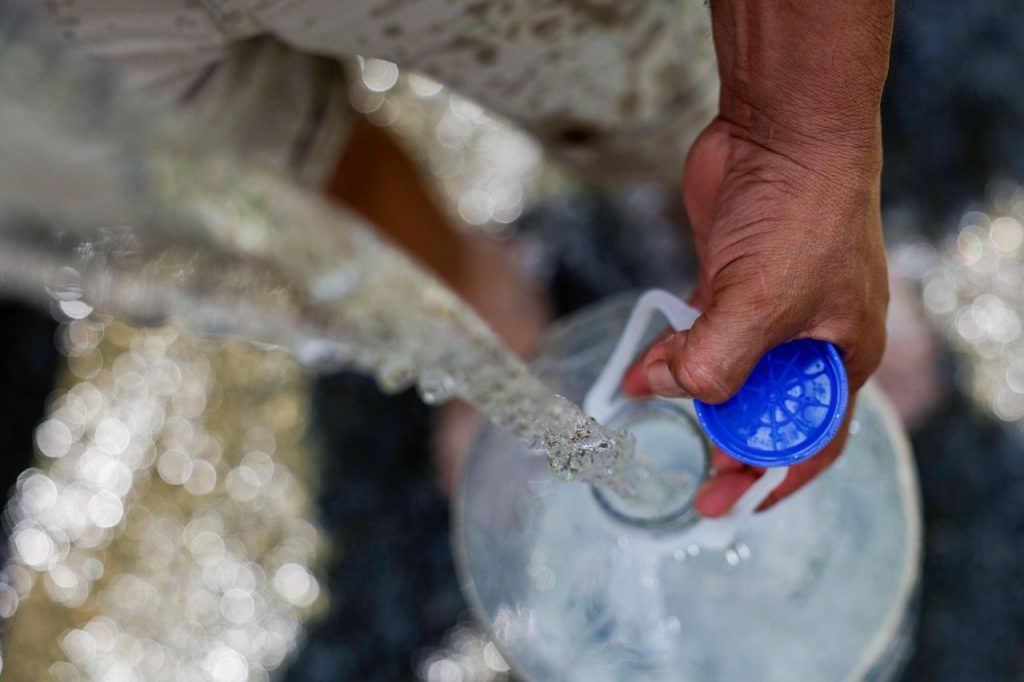
SDG 6, Infrastructure & Water Management Systems
On the positive side, the 2024 United Nations Sustainable Development Solutions Network Report highlights improvements in Greece’s performance on SDG 6: Clean Water and Sanitation is improving. Only 0.1% of Greeks now lack basic sanitation facilities, and around 95% of the population is connected to at least secondary wastewater treatment.
EurEau, the European federation of national associations of water services, estimates that despite the connectivity, Greece’s non-revenue water (NRW) – water that is lost before reaching the customer- is close to the EU’s average of 25%. However the federation warns that the number is not verifiable.
Antiquated infrastructure coupled with insufficient water management, and lack of proper enforcement of regulations complicate Greece’s water management system, which involves a mosaic of public and private authorities.
EYDAP, Greece’s largest water supply and wastewater treatment company, serves over 40% of the population and plans to invest 500-750 million euros over the next 3-4 years to add new reservoirs, enrich underground aquifers with recycled water, develop desalination projects, and use rainwater in stormwater collection infrastructure. Additionally, they will replace 480 km of secondary and tertiary network pipes and rehabilitate or replace 150,000 water meters.
Nonetheless, it is uncertain whether the measures will be sufficient and introduced fast enough. The Mayor of Archanes-Asterousia, a Cretan region, stressed recently that as Greece faces the current drought, the situation is worsened by infrastructure issues, mismanagement, and non-compliance by residents.
The particular region of Crete is primarily an agricultural region and 80-85% of the water consumed is used for irrigation. Farmers have been advised to use drip irrigation, but often do not comply, while water theft and network leaks are estimated to account for50% of water loss, says the Mayor. If the water supply proves insufficient, irrigation will be cut off to protect people and animals, negatively impacting farmers’ livelihoods.
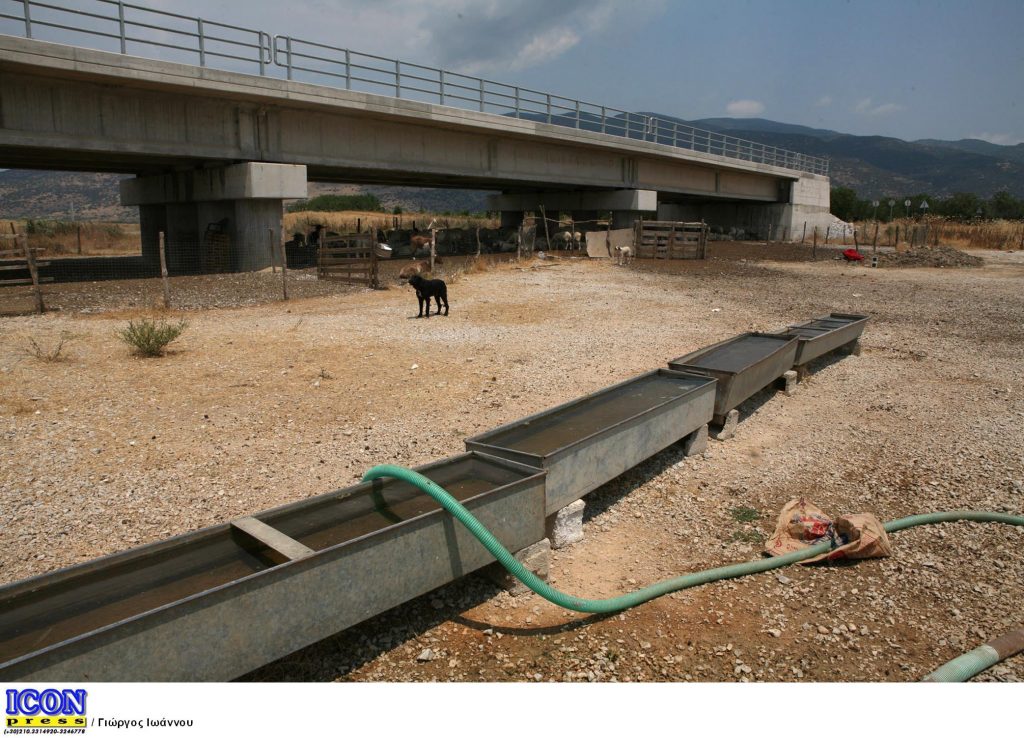
Your Water Footprint
Did you know that agriculture accounts for 70-80% of all water consumption, as it is needed for irrigation, livestock maintenance and food processing? How about the fact that it takes around 13,000 liters of water to produce 1 kilo of beef and just 1,250 liters to produce a kilo of lentils?
A survey by the European Investment Bank reveals that while Greeks have a solid understanding of the impact and risks of climate change, particularly in relation to human health and food security, they lag behind their European peers in knowing how to make a difference.
To help bridge this gap, here are some simple actions you can take to reduce your own water footprint and help the country avert a water crisis:
In Daily Life:
- Eat Smart: Choose locally grown seasonal produce and reduce meat consumption.
- Mindful Purchases: Be mindful of water-intensive products and buy only what is necessary.
- Car Care: Wash cars less often and use water-efficient facilities.
In the Home:
- Fix Leaks: Repair faucets, toilets, and pipes promptly.
- Water-Saving Fixtures: Install low-flow showerheads, faucets, and toilets.
- Shorter Showers: Take shorter showers to conserve water.
- Turn Off Taps: Save water by turning off taps when they are not in use..
- Efficient Dishwashing: Use a dishwasher and only run it when full. Dishwashers filter and recycle to use around 8 liters of water per wash, compared to 60 liters for handwashing in the sink!
- Reduce Waste: Minimize unnecessary water use: use a bowl for rinsing vegetables, for instance.
- Reuse Water: Use gray water (e.g., from baths) for non-drinking purposes.
- Laundry: Wash only full loads and adjust water levels accordingly.
In the Yard:
- Watering Times: Water plants early morning or late evening to reduce evaporation.
- Choose Plants Wisely: Opt for native, drought-resistant plants.
- Mulching: Use mulch to retain soil moisture around plants.
- Efficient Irrigation: Use drip or soaker hose systems instead of sprinklers.
- Rainwater Harvesting: Collect rainwater in barrels and use for watering plants.
